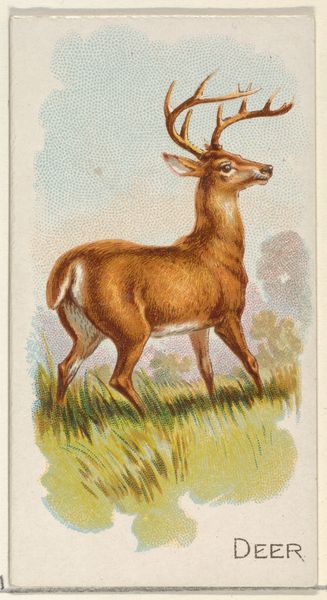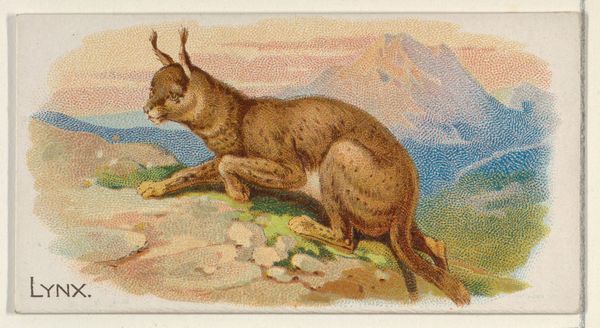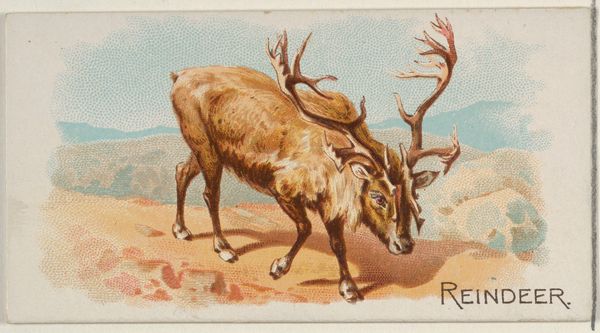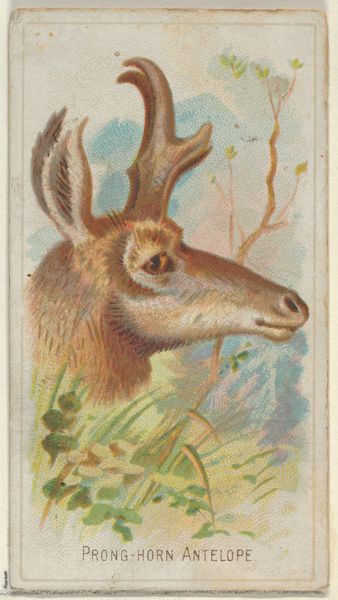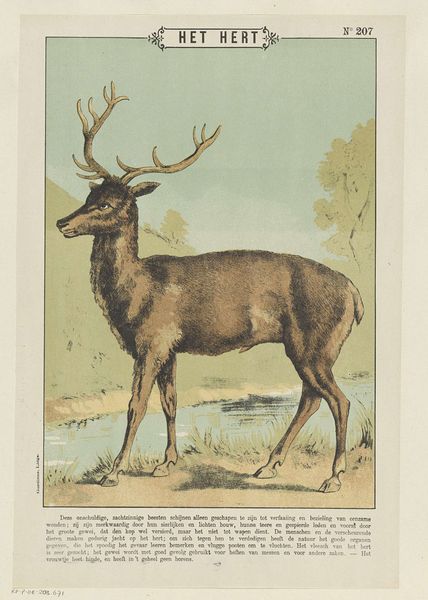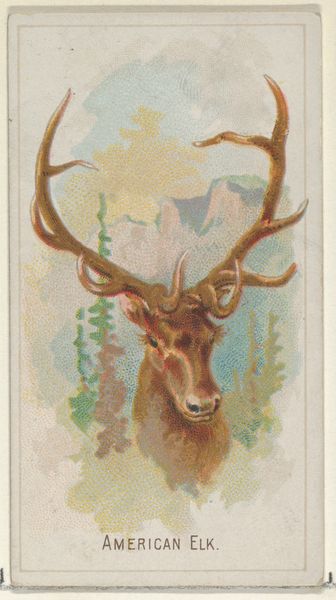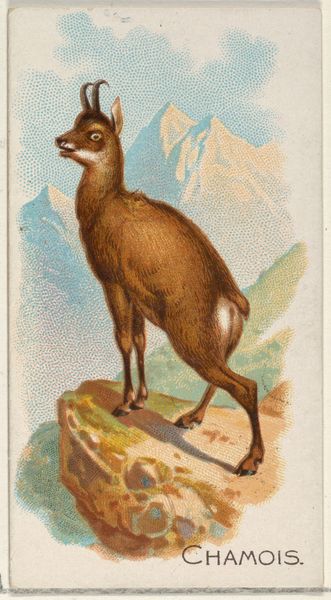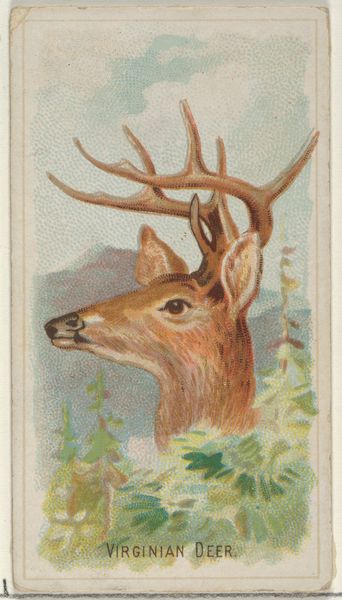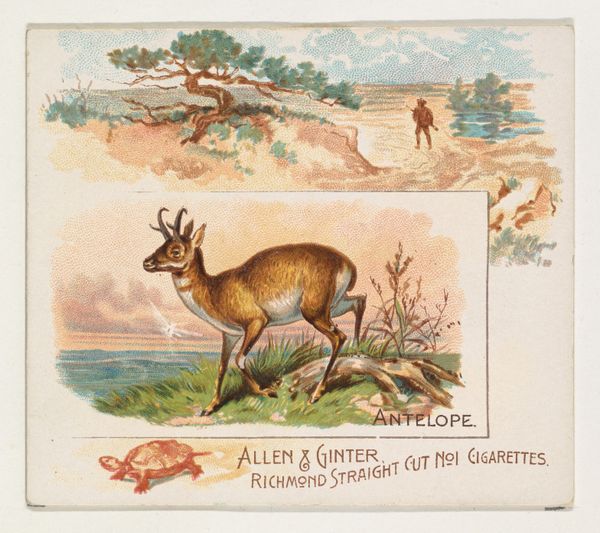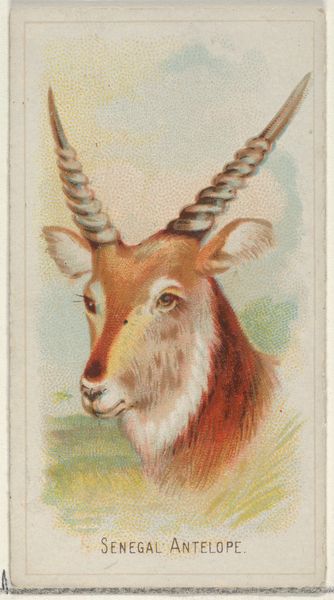
Antelope, from the Quadrupeds series (N21) for Allen & Ginter Cigarettes 1890
0:00
0:00
drawing, coloured-pencil, print
#
drawing
#
coloured-pencil
# print
#
coloured pencil
Dimensions: Sheet: 1 1/2 x 2 3/4 in. (3.8 x 7 cm)
Copyright: Public Domain
Editor: So, this is “Antelope, from the Quadrupeds series (N21) for Allen & Ginter Cigarettes,” dating back to 1890. It's a print created using coloured pencils, and there's something so delicate about the way the antelope is rendered. It seems peaceful but also observant, even a little cautious. How do you interpret this work? Curator: What I see here is not just an image of an animal, but a representation deeply embedded within the context of late 19th-century commercial culture and colonial expansion. Consider who Allen & Ginter were and what they represented: purveyors of tobacco, a product intrinsically linked to the exploitation of land and labour, especially in the American South. The “Quadrupeds” series, seemingly innocent, can be viewed as a form of symbolic appropriation of the natural world. The antelope, a creature native to North America, is reduced to a collectible item, a trading card. Editor: That's a compelling perspective. I hadn't thought about the implications of the company's role in colonial expansion and how this seemingly benign image might connect. Curator: It's essential to ask: what narratives are being subtly reinforced through such imagery? The taming, or perhaps framing, of the wild as something to be possessed, collected, and consumed is present here. Consider also, how does the depiction of the antelope reinforce existing ideas about wilderness, the American West, and human dominance over the natural world? Editor: I suppose I saw it as a simple nature study, but it's clear there's so much more to unpack in terms of power dynamics and cultural context. Curator: Exactly. Art doesn’t exist in a vacuum. By interrogating its historical and social framework, we can begin to understand its complexities and how it participates in broader conversations about identity, power, and representation. What new perspectives have you uncovered in our conversation? Editor: I've learned that even seemingly straightforward images carry significant cultural weight and understanding those historical contexts is critical to interpretation. Thanks!
Comments
No comments
Be the first to comment and join the conversation on the ultimate creative platform.
